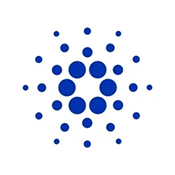In the quest for seamless interoperability and scalable smart contract platforms, Thorchain and Cardano stand out as two innovative solutions, each with their own unique architecture, economic models, and use cases. While Thorchain acts as a decentralized liquidity hub enabling cross-chain swaps without wrapped assets, Cardano emphasizes a layered approach to smart contract development with a focus on security, scalability, and environmental sustainability. This comprehensive comparison explores their technical foundations, recent developments, and ideal user profiles, providing crypto enthusiasts and investors with an in-depth understanding to inform strategic decisions.
Short on time? Jump to Thorchain vs Cardano Comparison
Understanding Thorchain and Cardano ?
Thorchain (RUNE) is a Layer-1 blockchain built on the Cosmos SDK, designed to facilitate trustless cross-chain swaps directly between various blockchain assets. Unlike traditional bridges, Thorchain employs liquidity pools paired with RUNE, enabling seamless, decentralized exchanges without wrapping assets, thus reducing counterparty risk. Its architecture is built around BFT Tendermint consensus, on-chain vaults, and threshold signature schemes, ensuring high security and transparency. Recent upgrades have added smart contract support through the V3 release, expanding its capabilities into decentralized application development. Thorchain’s core mission revolves around creating a unified liquidity network that supports multiple chains, including Bitcoin, Ethereum, and others, with a focus on liquidity incentives and yield farming.
Cardano, launched in 2017 by Ethereum co-founder Charles Hoskinson, is a layered blockchain platform built with scalability, sustainability, and formal verification in mind. Its architecture separates transaction settlement from smart contract execution, with the Cardano Settlement Layer (CSL) and the Cardano Computation Layer (CCL) ensuring modular upgrades and flexibility. Using the Ouroboros proof-of-stake protocol, Cardano emphasizes energy efficiency and decentralization, boasting over 3,000 stake pools. Its development approach is research-driven, with a focus on peer-reviewed protocols and formal methods. Recent initiatives include the integration of sidechains and advanced smart contract capabilities via Plutus and Marlowe, aiming to become a versatile foundation for decentralized applications, especially in finance and enterprise sectors.
While Thorchain is primarily known for its cross-chain liquidity solutions and decentralized exchange functionalities, Cardano positions itself as a comprehensive smart contract platform with a focus on security, scalability, and sustainability. Both projects have ambitious visions for the future of blockchain interoperability and decentralized finance, but they approach these goals from different angles—Thorchain through liquidity networks and cross-chain swaps, and Cardano through layered architecture and formal verification for secure dApps.
Understanding these foundational differences helps clarify their roles in the crypto ecosystem. Thorchain aims to become the backbone of cross-chain liquidity, facilitating seamless asset transfers and swaps, while Cardano seeks to provide a secure, scalable platform for building a wide array of decentralized applications. The following sections delve into their technological nuances, recent advancements, and the specific user profiles they serve best.
Key Differences Between Thorchain and Cardano
Core Functionality
- Thorchain: Thorchain functions as a decentralized liquidity network enabling cross-chain asset swaps without wrapped tokens, focusing on interoperability and liquidity provision across multiple blockchains. Its liquidity pools are continuously funded with RUNE, supporting assets like Bitcoin, Ethereum, and USDC, with fees adjusted based on liquidity depth. It also offers yield farming and lending products, aiming to create a unified liquidity ecosystem for DeFi participants. The recent V3 upgrade introduced smart contract support, further expanding its utility into decentralized app development. Thorchain's architecture prioritizes high security, utilizing threshold signature schemes and on-chain vaults to protect user funds and prevent collusion or theft.
- Cardano: Cardano is a layered blockchain platform designed for secure, scalable smart contracts and decentralized applications. Its architecture separates transaction settlement from computation, enabling flexible upgrades without compromising security. Using Ouroboros, a proven proof-of-stake consensus, Cardano emphasizes energy efficiency and decentralization, with over 3,000 stake pools. Its smart contract language, Plutus, and domain-specific language, Marlowe, enable developers to build financial and enterprise dApps with formal verification. Cardano's focus is on long-term sustainability, peer-reviewed protocols, and facilitating real-world applications like government projects and partnerships with industries, including agriculture and education.
Thorchain vs Cardano Comparison
| Feature | ✅ Thorchain | ✅ Cardano |
|---|---|---|
| Primary Use Case | Decentralized cross-chain liquidity and swaps, with yield farming and lending. | Layered smart contract platform for secure, scalable decentralized applications. |
| Consensus Mechanism | BFT Tendermint with threshold signature schemes for security. | Ouroboros proof-of-stake, emphasizing energy efficiency and decentralization. |
| Smart Contract Support | Introduced in V3 upgrade, supports complex DeFi applications via CosmWasm. | Native support via Plutus and Marlowe, enabling formal verification and enterprise use. |
| Security Model | Funds secured by node bonding, threshold signatures, and vault collateralization. | Security through formal methods, layered architecture, and decentralized stake pools. |
| Recent Major Upgrade | V3 release with token burn mechanism, Cosmos SDK v50, and smart contract support. | Alonzo upgrade enabling smart contracts, sidechains, and enhanced scalability. |
| Ecosystem Focus | Cross-chain liquidity, DeFi products, yield farming. | Decentralized finance, enterprise solutions, scalability, and interoperability. |
Ideal For
Choose Thorchain: DeFi enthusiasts seeking seamless cross-chain swaps and liquidity pools; yield farmers and liquidity providers.
Choose Cardano: Developers and enterprises needing secure, scalable smart contract platforms with formal verification and modular upgrades.
Conclusion: Thorchain vs Cardano
Thorchain and Cardano exemplify two distinct yet complementary approaches to advancing blockchain technology. Thorchain excels in bridging assets across multiple chains, fostering a decentralized liquidity ecosystem that reduces reliance on wrapped tokens and centralized exchanges. Its recent upgrades and liquidity-focused features position it as a cornerstone for cross-chain DeFi activities. Conversely, Cardano’s layered architecture, formal verification, and emphasis on sustainability make it a versatile platform for building secure, scalable decentralized applications with enterprise-grade security. Its focus on academic rigor and modular design paves the way for a broad spectrum of use cases, from finance to government.
Choosing between Thorchain and Cardano hinges on user needs: those prioritizing seamless, trustless cross-chain liquidity and yield farming may find Thorchain more aligned with their goals, while developers and organizations seeking a robust, secure smart contract platform with long-term sustainability might lean towards Cardano. Both projects are pushing the boundaries of blockchain innovation, but their distinct architectures and strategic focuses serve different niches within the crypto ecosystem. Understanding these differences enables users to align their investments and development efforts with the most suitable platform for their ambitions.






